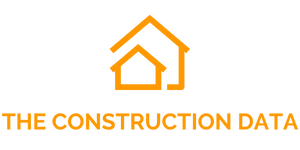
Amrize Partners with Meta on AI-Optimized Concrete for Minnesota Data Center
In a groundbreaking collaboration, Amrize (NYSE: AMRZ), a leader in material engineering, has joined forces with Meta to co-develop an innovative, AI-optimized concrete mix designed specifically for the unique performance, speed, and sustainability requirements of Meta’s new data center in Rosemount, Minnesota. The custom-engineered concrete represents a major step forward in smart construction and decarbonization, marking the first time a large-scale digital infrastructure project has used artificial intelligence to guide the creation of advanced building materials at this scale.
Meeting the Evolving Needs of the Digital Age
The global explosion in data consumption, accelerated by the adoption of cloud services, artificial intelligence, and emerging technologies, has created an urgent need for more efficient, scalable, and environmentally sustainable data centers. To meet this demand, hyperscalers like Meta are turning to innovation not just in server and cooling technologies, but also in the physical materials that make up the data center shell itself.
As Julius Kusuma, a research scientist at Meta, explained, “We work to design our data centers as efficiently and sustainably as possible, while driving our AI ambitions forward. By partnering with industry expert Amrize, the University of Illinois, and Mortenson, we were able to maximize the performance and environmental profile of the concrete being used in our Rosemount Data Center. We are excited to continue testing different ways we can improve our material design in future projects with Amrize.”
This initiative is part of Meta’s broader commitment to sustainability, carbon reduction, and the application of cutting-edge technology to every layer of its infrastructure operations. The collaboration marks a pivotal move to integrate digital tools, such as open-source AI models, into traditionally analog domains like concrete formulation.
Engineering Performance and Sustainability Through AI
The concrete mix was developed through a collaborative research and testing effort involving Amrize, Meta, the University of Illinois Urbana-Champaign’s Grainger College of Engineering, and Mortenson, the project’s construction partner. Leveraging Meta’s open-sourced AI models and Amrize’s expertise in advanced materials engineering, the team sought to develop a concrete mix capable of meeting several simultaneous goals: high compressive strength, controlled setting time for efficient construction scheduling, and a significantly lower embodied carbon footprint.
Traditional methods of concrete mix design rely heavily on empirical formulas, trial-and-error iterations, and rigid performance trade-offs. In contrast, the AI-guided approach enables rapid optimization across a wide set of parameters, drawing from thousands of data points to determine the ideal blend of ingredients and curing conditions. This results in a high-performance concrete that not only meets but exceeds the requirements for slab-on-grade applications critical to data center foundations.
Jaime Hill, president of Amrize Building Materials, highlighted the broader impact of this development. “Partnering with Meta and using AI to develop an innovative concrete mix that meets the unique needs of data centers is just the beginning. Using AI, we can optimize our specialized concrete formulations for data center requirements, from performance needs like strength and durability to thermal regulation and energy-efficiency. We look forward to continuing this exciting work with Meta to scale up the adoption of advanced tailored concrete mixes.”
Quantifiable Sustainability Gains
One of the most compelling achievements of this project is the dramatic reduction in carbon emissions associated with the concrete’s production and application. By incorporating low-carbon cementitious materials and leveraging AI to fine-tune the formulation, the team developed a custom ECOPact mix with a carbon footprint approximately 35% lower than that of conventional concrete.
Concrete is one of the most widely used building materials on Earth and also one of the most carbon-intensive, largely due to the high emissions generated during cement production. With the construction and operation of data centers under increasing scrutiny for environmental impact, reducing embodied carbon in structural materials is an important lever for sustainability.
The ECOPact mix’s demonstrated ability to meet structural performance benchmarks while reducing emissions makes it a viable candidate for broader use in both the current facility and future projects.
Research and Academia Drive Innovation

A crucial contributor to the success of this AI-powered approach was the data science and materials testing conducted by Professor Nishant Garg and his team at the University of Illinois Urbana-Champaign. As the lead academic partner, Garg’s lab provided the raw data and material behavior models used to train the AI algorithms behind the mix design.
“AI-driven mix design lets us optimize concrete for performance, cost, and carbon in one step,” said Professor Garg. “As mixes become more complex—with innovative raw materials and product formulation—AI can also forecast critical properties like strength gain over time. This allows for much more intelligent decision-making during both design and construction.”
Garg’s work underscores the value of academia-industry collaborations, where scientific rigor meets real-world application. The partnership has created a repeatable framework that can be used to develop regionally optimized, application-specific concrete solutions, helping to accelerate the transformation of the built environment.
Scaling for the Future of Data Infrastructure
The Rosemount Data Center project serves as a proof-of-concept for the broader use of AI in material design. Amrize plans to apply the learnings from this pilot to a wider portfolio of construction materials and use cases beyond data centers. With AI’s ability to model and simulate thousands of potential mix configurations in a fraction of the time required for traditional methods, future infrastructure projects could benefit from even greater efficiency and sustainability.
This development comes at a time when the construction sector, which accounts for nearly 40% of global carbon emissions, is under pressure to modernize. The use of smart, AI-optimized materials can become a powerful enabler for net-zero targets, offering a data-driven path to reduce waste, improve performance, and support circular construction practices.
In the case of hyperscale data centers—which require precision engineering, massive material volumes, and tight construction schedules—the potential for AI-enhanced concrete is particularly significant.
A Model for Industry-Wide Transformation
While this initiative is centered on Meta’s Rosemount facility, the implications extend far beyond a single project. It offers a template for how forward-thinking companies can align engineering, sustainability, and digital technology in service of environmental responsibility and business performance. It also highlights the critical role that collaboration between technology firms, academic institutions, and construction innovators plays in solving complex, interdisciplinary challenges.
With AI rapidly gaining traction across all aspects of design and construction—from robotic site operations to digital twins—projects like this demonstrate that the future of materials science will be both intelligent and sustainable.
As Meta, Amrize, and their partners continue to explore new AI-driven concrete applications, the industry may be witnessing the dawn of a new era—where code meets concrete, and innovation is cast in every pour.




